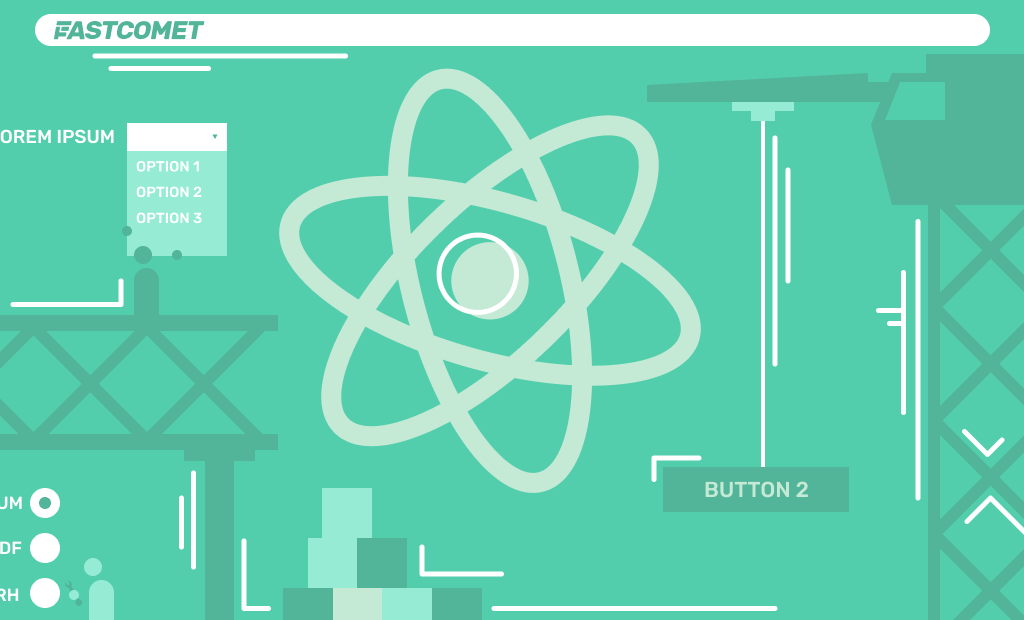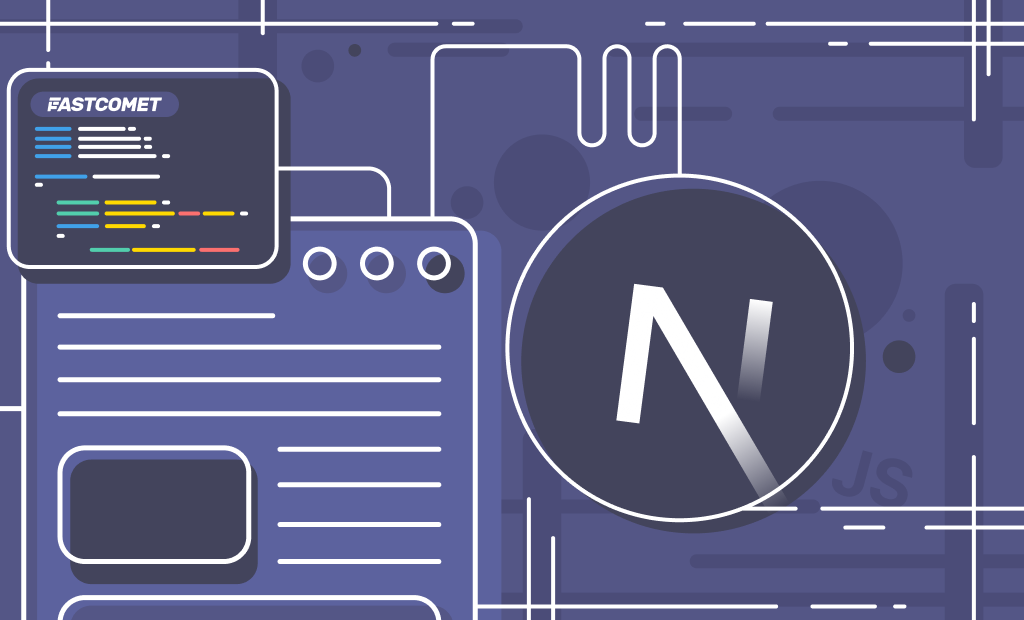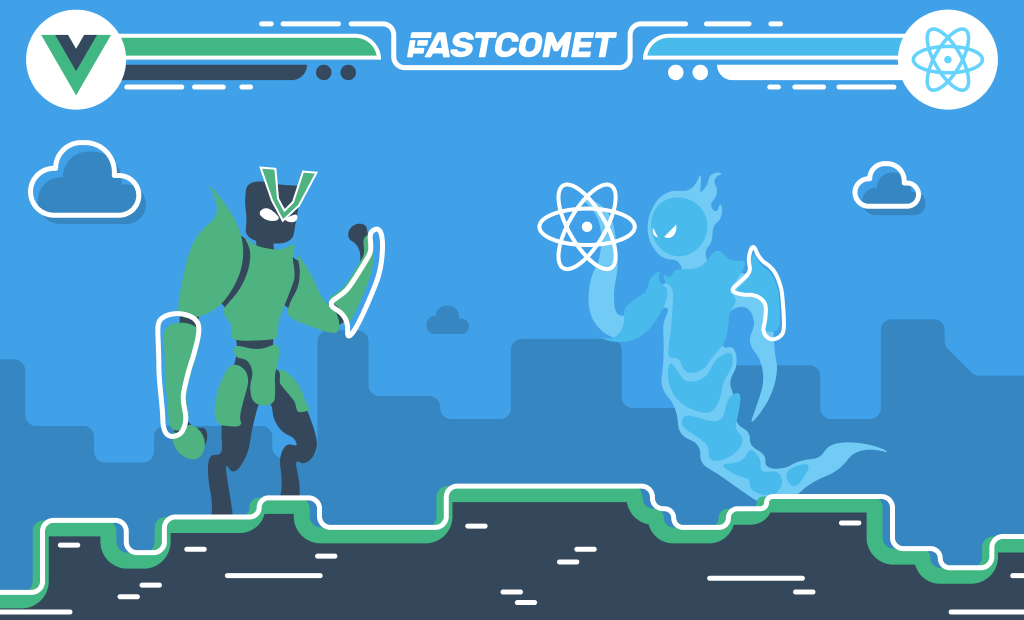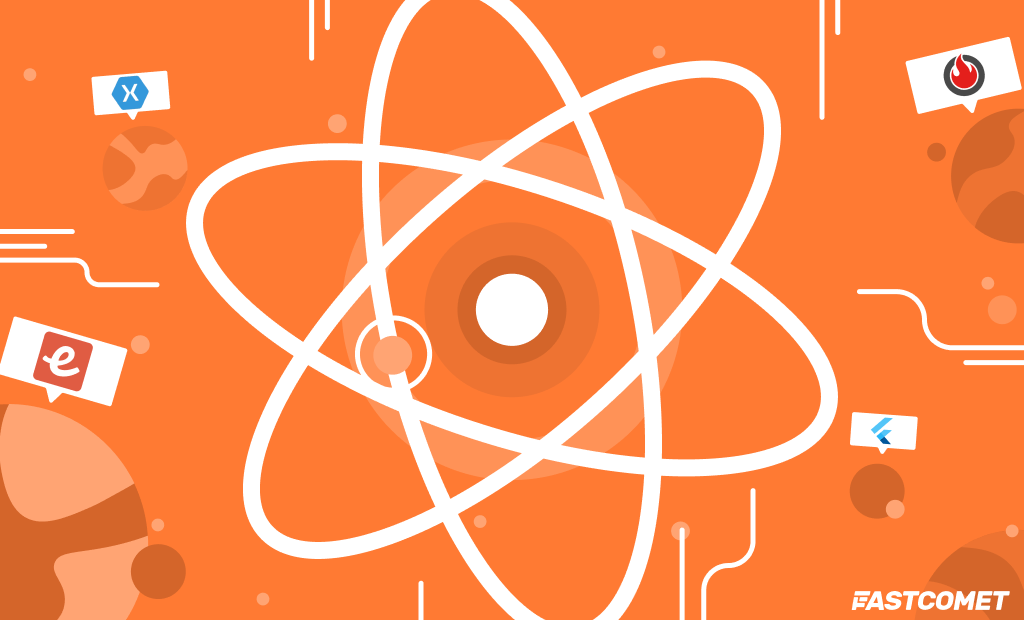
What Can I Build with React JS: 15 Exciting Project Ideas
You’ve learned the fundamentals of React and have a firm grasp of JavaScript? You’re thinking of taking it up a level, now that you’ve mastered the fundamentals? But how? After learning the principles of the React library and reaching the intermediate stage of experience, many React newbies run into this issue. Focusing on developing React projects is the best (and probably most effective) approach to move forward.
No, we’re not talking about major industry projects; we’re talking about smaller real-world projects that can help you put your academic knowledge into practice. You can bridge the gap between being a React novice and a professional developer by working on such projects.
Creating React applications will allow you to practice your React abilities while also allowing you to express yourself creatively. However, before we dive into details, let’s take a look at the “why” and “how”.
Table of Contents:
Why Work on React Projects?
Have you ever heard the phrase “practice makes perfect”? After you’ve mastered the fundamentals of React, you’ll want to practice constructing actual projects. That way you can learn how to create functional applications.
Furthermore, as you begin working you will learn the tools and ecosystem to employ for each project. The main benefit of using React to build apps is that once you’ve successfully launched them, you can add them to your portfolio to impress future employers.
The most difficult part of the process, though, is deciding what React apps to create. We’ve gathered a collection of React projects for beginners to assist you to get started with React project development.
How to Kickstart the Process of Developing React Apps
One of the first things to keep in mind when working on a React project is that it is mostly self-directed. There won’t be much to guide you, except your understanding of the basics of React, as well as online tutorials and learning materials. You’ll need to learn through trial and error.
The work of creating React applications from scratch may appear daunting to a newbie, but there is a trick to making the process easier: break down an application into smaller components. Concentrate on one aspect at a time and keep the dots connected as you go. As you continue to practice and experiment with various React tools and ecosystems, you will have a better understanding of typical app development patterns, as well as which tools are optimal for developing certain React app features.
Beginners frequently believe that they must construct an app’s backend from the ground up; however, this is not the case. You can use serverless technologies like AWS Amplify, Firebase, and Hasura to get an out-of-the-box backend for your app. These tools help you save time while also increasing your productivity.
It’s not easy to answer the age-old question, “How do I get started with X?” Not because there isn’t any information available, but because there is, or rather, far too much. So how do you tell what is appropriate for a fresh developer learning a framework?
Isn’t it difficult? Plus, there are lessons, videos, courses, and tasks to do. For these scenarios, the term “analytical paralysis” comes to mind, and I’m sure you’ve experienced it as well.
The key to breaking free from that paralysis is to start doing something, anything, and here is a list of 5 fun projects you can construct while learning something new in the process.
5 Projects You Should Build to Get Started with Reactjs
1. Build a Twitter Sidebar Clone
The best projects to construct are those that have already been completed. Instead of worrying about coming up with something fresh and creative, you can focus on figuring out how to imitate something that has previously been done (thus, you know it can be done).
A clone of Twitter’s sidebar for example. It’s only a test project because you can’t do much with it on its own but it will help you to understand the fundamentals of React without having to worry about data fetching. That will be added later.
If you’ve just done one or two React projects, this is a wonderful starting project because it covers subjects like:
- Creation of a new React project using create-react-app;
- Styling of your components using MaterialUI;
- You’ll learn about hooks and how to use them.
You can find plenty of guides on how to use react for building a Twitter sidebar clone on the Internet.
2. Build a Blog
A blog, like a To-Do app, is a classic. It’s a little more complex, but it also covers some other intriguing tasks, like having numerous parts and needing to move between them.
You’ll not only practice, but you’ll also apply what you learned about hooks in the last project to learn how to use custom hooks from third-party libraries.
In fact, react-router-dom, a package that aids in the binding of the React Router module within web applications, is given its own section.
As part of this project, you’ll work on:
- Cloning and working with an existing project;
- React Router and how to use it to add navigation to your application;
- Using custom hooks from 3rd party libraries;
- Setting up a 404 page and what it means.
This is a great second project to work on because it’s not overly complex and it gradually adds new concepts by showing you some practical examples. You already know what to use if you need guidance (yes, we mean Google).
3. Start Interacting with 3rd Party APIs
Requesting data from third-party libraries is a huge part of React you’ll have to learn about. It’ll soon become second nature to you, something you’ll do as a matter of course, but you have to start somewhere, right? You may use Wikipedia’s public REST API to interact with it and create a search engine around it.
Everything you’ve learned so far with the previous two concepts will be part of the what you’ll work with, plus you’ll start learning about fetch, which will become one of the most important tools in your React toolkit.
The concepts you’ll learn and practice by doing such a project are:
- Making API requests using Fetch;
- Dealing with external results and showing them on your application.
There aren’t many others, but they’re advanced. It’s a good idea to start slowly, focusing on fewer but more complex topics at this point.
But be careful not to try to run before you’ve learned to crawl. If you’ve never worked with React before, start with #1 and #2 before moving on to #3, as this project assumes some prior knowledge.
4. Handling Your Own Application State
Application state is a key topic for React developers, continuing the theme of “don’t run before you know how to crawl.” Knowing how to preserve the state for a component is one thing; sharing that data with many components, or even passing it from parent components to children components, is another and can lead to some questionable practices.
So, before diving into a large framework like Redux, you’ll learn about numerous approaches to deal with application state while doing this project.
This is because these libraries tend to “simplify” the users’ lives by hiding some functions from them. That’s a lovely notion, but you won’t be able to learn anything if you don’t know what they’re hiding from you. That is crucial. Go over this guide and see if you can apply it to your next project. After that, you can look into Redux, Recoil, or any of the other options available.
Once you finish with that project, you’d have read about:
- Memoizing;
- Reducers for state management;
- Using context.
You’ll have a lot of questions about this one because it’s a high-level React project. But that’s precisely the purpose! It will unlock a number of doors, and it will be up to you to learn more about them. Use the Internet at your leisure.
5. Throwing Next.js Into the Mix
The ultimate stage would be to combine everything and integrate one of the major frameworks for creating React applications: Next.js.
This framework will provide you with the tools you need to build both the front-end and back-end of your application. Let’s pretend you want to create a Music Entertainment App. For this, you’ll need items like:
- Next.js as the main framework;
- Algolia as the main search service;
- Cloud Storage for Firebase;
- Firestore database.
You’ll also cover subjects like communicating with other services and CSS styling. As the fifth and final project as a beginner React developer, this is the best way to go. Once again, you’ll find plenty of guides online. And, if you are looking for a neutral, already set up environment to experiment on, look no further than our Managed ReactJS Hosting!
Top 15 Project Ideas for Web Apps to Build on ReactJS
Now that we’ve covered the starting projects let’s go over some of the best ideas for ReactJS Web Apps nowadays. Most, if not all of these will have to be hosted online, if you want other users to have access and use them. Our ReactJS Managed Hosting plans are an excellent solution for such a need. They require no setup from you. All you need is a project idea and the know-how.
1. Social Media App
Yes, you may be perplexed by this point because the market is flooded with a variety of popular social platforms, and there are plenty of leaders like YouTube, Instagram, TikTok, or Twitter, but who knows? Every day, we see new trends and newcomers, as everyone noticed with Clubhouse’s brief popularity and abrupt demise. With React, you can create a prototype for Instagram, Twitter, or Tumblr. The power of visuals is invaluable, and social media is where we catch and disseminate emotions online. Create a catchy and memorable UI design to captivate your consumers’ attention.
2. eCommerce App
Ecommerce app development is a crucial step in expanding your company’s content management system. ReactJS will become a commonly used technology for creating high-performing eCommerce platforms while also reducing development time and cost. You may create any type of modern app with the features of shopping cart software, such as Shopify, AliExpress, or Amazon, thanks to React’s performance and versatility.
3. Productivity App
ReactJS can also be used to create the greatest productivity software. It might be another Calendly, Todoist, or Asana, for example. Productivity apps help with a variety of chores, from browser plugins to different services that help you maintain relationships. Productivity programs assist you in improving your performance, organizing and monitoring your daily duties or activities, keeping records or daily notes, and so forth. All of them have different purposes and useful capabilities, such as calorie counters, distraction trackers, and reminder apps. Productivity apps cover anything from browser extensions to programs that help you maintain crucial relationships.
4. Entertainment App
One of the most widely used applications is entertainment software. This covers music, video, gaming, and any other media outlets or streaming services. YouTube, Spotify, and Medium are all well-known social media services. You may develop a basic logic game, like Tetris, or something more complex, like a Netflix clone, with React. Then you’ll need the react-player npm package for playing media, Gatbsy or NextJS for data processing and storage, and Typesense for enabling search by name, whether it’s a movie, track, or book.
5. Blog
We’ve already mentioned blogs in this post, but it has to be put here as well. Another method to properly employ React technology is to create a simple CMS for blogging. You can try to construct your store with Sanity.io by default, but building your content management platform with a web app builder is faster.
The list of functionality for a React blog will be similar to those of the majority of blog systems. It’s a kind of hierarchical relationship system. For example, you might construct components to display the publication first, then a component to display them in a grid, then add the upload an image functionality and a way to edit and publish a post, etc. Various add-ons like upvotes, reactions, comments, and views displayed may become the next-level options.
6. Dating App
Tinder is still the most popular dating app in the United States. Establishing your own dating app appears daunting and perhaps excessively ambitious, but you can begin by developing your own CMS for an app like Tinder. On the other hand, you may create a Tinder for pets using the same method. Any dating app’s main features will be profile creation and verification, geolocation, matching/unmatching options, push alerts, and, of course, talking.
7. Chat/Instant Messaging App
You can make a chat application as one of your React project ideas. Any messaging software that has a sender and a receiver is a type of chat application. You can, however, create a video chat app or any other type of live chat. ChatRoulette is the first chat program that comes to mind, and its UI was also created with React. Slack is well-known in the IT field and among software professionals, and was also created with React.
8. Books Application
You can design an app for managing your reading flow, similar to Goodreads, an American cataloging website for book enthusiasts. Libib, for example, is a library management program that assists you in cataloging your favorite media such as books, music, films, and games. What is the definition of a standard book app? It’s like a catalog/library or a content management system, with a list of books under the currently-reading, to-read, and already-read tabs, as well as a search bar.
9. Expense Tracking Application/Money Tracker
You’ve probably heard of Quickbooks and Expensify. The latter is arguably the most popular since it appeals to a broader audience and is more than just another budget tracker or bookkeeping application; it’s a whole system for documenting and managing your finances. This type of app is typically used to solve business problems like real-time reporting, invoicing, and so on, though you may create your own simplified budget tracker with React.
10. Fitness App/Workout Tracker
How do you make a React fitness app? Fitness apps, like other apps, allow you to keep track of your daily sports activity. Sports apps give us data that we can use to improve ourselves, such as reporting on the number of miles run. Additionally, they can also show sports streaming events with winning odds and scores, or betting ratios.
Track your daily sports successes using an app like a fitness tracker or workout tracker, which can be simply built with React, Firebase, and Google Material UI components, for example. The main principles and methods for developing a sports app are the same:
- project setup;
- authentication and authorization;
- custom calendar creation;
- database addition;
- production deployment.
11. Language Learning App
Knowing a foreign language is a great boon nowadays, with how interconnected the world is. You can create an application like that with React, CSS, and Typescript. Start with a simple word insertion or matching term exercise that requires you to drag and drop components, and expand from there.
12. ToDo App
For those who are just getting started with programming, the ToDo app is a great idea for a React project. You don’t need any complicated side libraries, just some basic knowledge of React, and you can create yourself something very useful. On top of that it can be useful to other people, and if you can get a brilliant idea, you can even stand out from other such applications.
13. Music App
An application like Dezeer or Spotify could be the next React project to add to your portfolio. For example, it might be turned into a NextJS project using Firebase Cloud as a library, Firestore as a database for creating hierarchical data structures, and Lucidworks or Algolia as a search engine.
14. Sleeping Tracker App
A sleep habit tracker is a simple and effective React project. The goal is to keep note of when you sleep, when you wake up and how long you sleep. Any sleep entries can be added, edited, or removed by users. For the front end, you might require React, HTML, and CSS; for the backend, you might need Java, C#, or even Node.JS; and for the database, you might need PostgreSQL or MySQL.
15. Quiz Application
Another suggestion for your next project is a ReactJS quiz app. This type of software won’t break the bank, but it will demand an understanding of TypeScript, useState hooks, React components, and other similar concepts. PluralSight has comprehensive instruction on how to create a quiz.
In a Nutshell
Right now, ReactJS is all the rage. As a result, learning the same is clearly beneficial for improving your employment prospects as a web developer. The projects listed above will assist you with learning React or improving your programming skills.
And, if you need an environment that is ready to accept a React project, or have one built from scratch, then our ReactJS Managed Hosting plans will suit that need perfectly!

The latest tips and news from the industry straight to your inbox!
Join 30,000+ subscribers for exclusive access to our monthly newsletter with insider cloud, hosting and WordPress tips!



No Comments